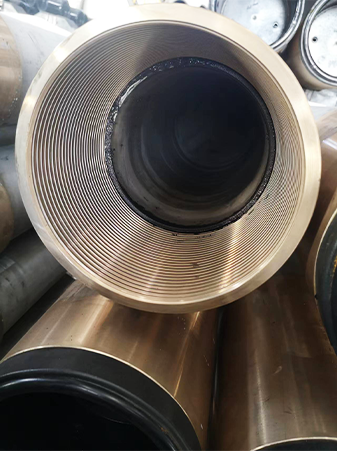- Afrikaans
- Albanian
- Amharic
- Arabic
- Armenian
- Azerbaijani
- Basque
- Belarusian
- Bengali
- Bosnian
- Bulgarian
- Catalan
- Cebuano
- Corsican
- Croatian
- Czech
- Danish
- Dutch
- English
- Esperanto
- Estonian
- Finnish
- French
- Frisian
- Galician
- Georgian
- German
- Greek
- Gujarati
- Haitian Creole
- hausa
- hawaiian
- Hebrew
- Hindi
- Miao
- Hungarian
- Icelandic
- igbo
- Indonesian
- irish
- Italian
- Japanese
- Javanese
- Kannada
- kazakh
- Khmer
- Rwandese
- Korean
- Kurdish
- Kyrgyz
- Lao
- Latin
- Latvian
- Lithuanian
- Luxembourgish
- Macedonian
- Malgashi
- Malay
- Malayalam
- Maltese
- Maori
- Marathi
- Mongolian
- Myanmar
- Nepali
- Norwegian
- Norwegian
- Occitan
- Pashto
- Persian
- Polish
- Portuguese
- Punjabi
- Romanian
- Russian
- Samoan
- Scottish Gaelic
- Serbian
- Sesotho
- Shona
- Sindhi
- Sinhala
- Slovak
- Slovenian
- Somali
- Spanish
- Sundanese
- Swahili
- Swedish
- Tagalog
- Tajik
- Tamil
- Tatar
- Telugu
- Thai
- Turkish
- Turkmen
- Ukrainian
- Urdu
- Uighur
- Uzbek
- Vietnamese
- Welsh
- Bantu
- Yiddish
- Yoruba
- Zulu
tubing and casing
Tubing and Casing Essential Components of Oil and Gas Production
In the oil and gas industry, tubing and casing are critical components that ensure the efficient extraction of hydrocarbons from underground reservoirs. Understanding their roles, materials, installation processes, and maintenance is fundamental for engineers and operators involved in drilling and production activities.
What is Casing?
Casing refers to the series of steel pipes that are installed in the wellbore to stabilize the structure and prevent the collapse of the surrounding rock formations. Casing serves multiple purposes it isolates different pressure zones, prevents groundwater contamination, and provides a conduit for oil and gas to flow to the surface. The installation of casing occurs in stages, with each section being cemented in place to enhance its stability and seal off any potentially hazardous fluids.
Typically, casing is categorized into several types, including surface casing, intermediate casing, and production casing. Surface casing is the first installed and runs from the surface to a certain depth to protect freshwater aquifers. Intermediate casing follows and is installed to manage pressure and protect the formation from malfunctions. Finally, production casing penetrates the hydrocarbon zone and is lined with tubing to transport the extracted oil or gas to the surface.
What is Tubing?
Tubing is a smaller diameter pipe that is inserted into the production casing after drilling is complete. Its primary function is to serve as a conduit for the production fluids (oil, gas, or water) to flow from the reservoir to the surface. While casing remains fixed and is a permanent part of the well, tubing can be removed and replaced, allowing operators to maintain or enhance production without re-drilling.
tubing and casing

Tubing is often manufactured from high-strength steel to withstand the internal pressures and corrosive environments encountered during production. Additionally, specialized coatings and materials may be used for tubing in harsh environments, including sour gas conditions or areas with high temperatures.
Installation and Maintenance
The installation of casing and tubing requires careful planning and execution. Casing is set in stages, with specific drilling techniques used to ensure proper alignment and fit. Cementing is crucial to secure the casing, requiring proper techniques to prevent issues like fluid migration or cement failure.
Tubing installation follows casing and involves a running tool that helps position the pipe within the casing. Once secured, the tubing string may be equipped with various hardware like packers or valves to control the flow of fluids.
Maintenance is an ongoing requirement for both tubing and casing. Operators must monitor for signs of wear, corrosion, or failure throughout the production cycle. Regular inspections using advanced techniques such as ultrasonic testing or magnetic flux leakage can identify potential issues before they escalate, ensuring the integrity of the well and maintaining safety standards.
Conclusion
In summary, tubing and casing are indispensable parts of the drilling and production process in the oil and gas industry. Their proper selection, installation, and maintenance not only enhance production efficiency but also ensure environmental safety and well integrity. As technology evolves, new materials and methods continue to improve the performance and durability of these components, paving the way for more efficient and safer hydrocarbon extraction in the future. Understanding their significance is essential for anyone involved in the oil and gas sector, highlighting the intricate interplay of engineering, geology, and safety.
-
Tubing Pup Joints: Essential Components for Oil and Gas OperationsNewsJul.10,2025
-
Pup Joints: Essential Components for Reliable Drilling OperationsNewsJul.10,2025
-
Pipe Couplings: Connecting Your World EfficientlyNewsJul.10,2025
-
Mastering Oilfield Operations with Quality Tubing and CasingNewsJul.10,2025
-
High-Quality Casing Couplings for Every NeedNewsJul.10,2025
-
Boost Your Drilling Efficiency with Premium Crossover Tools & Seating NipplesNewsJul.10,2025







